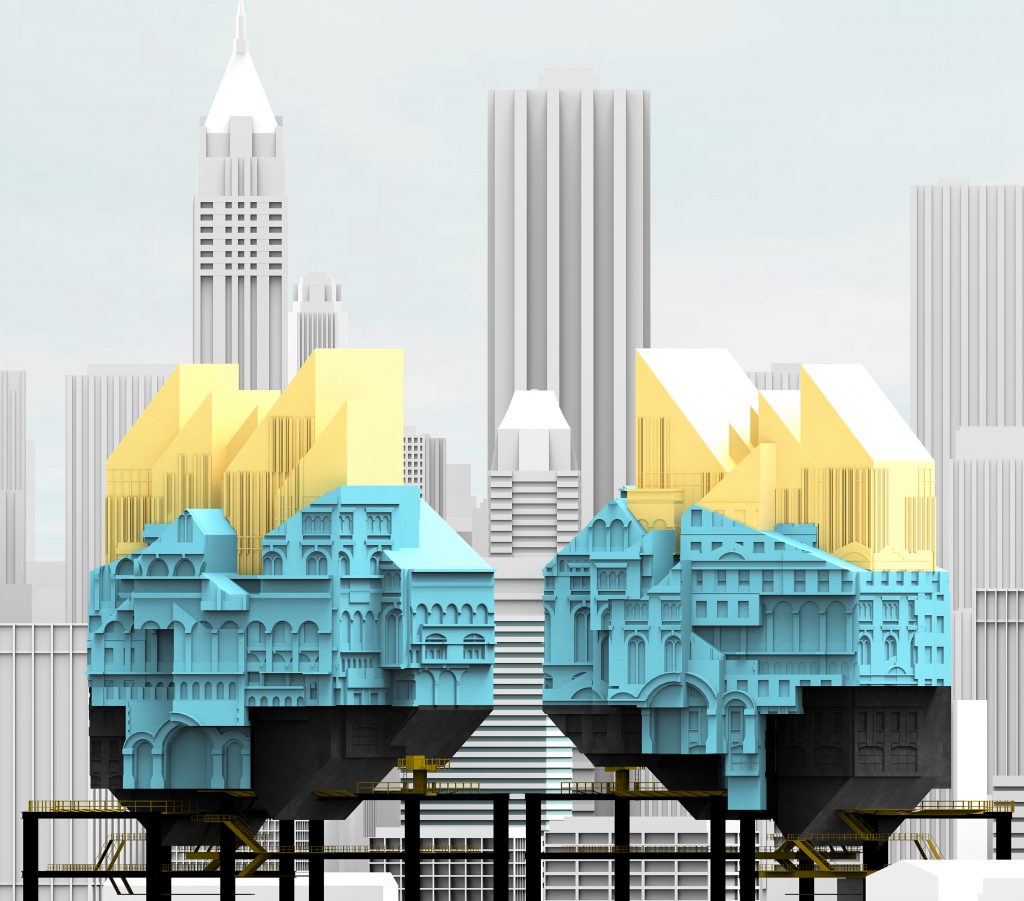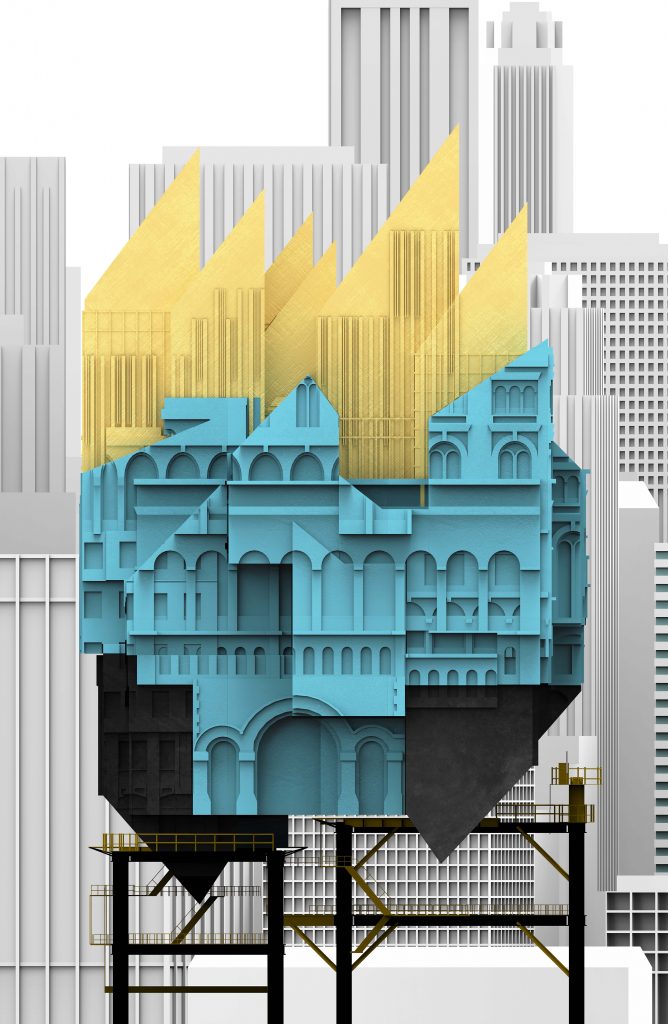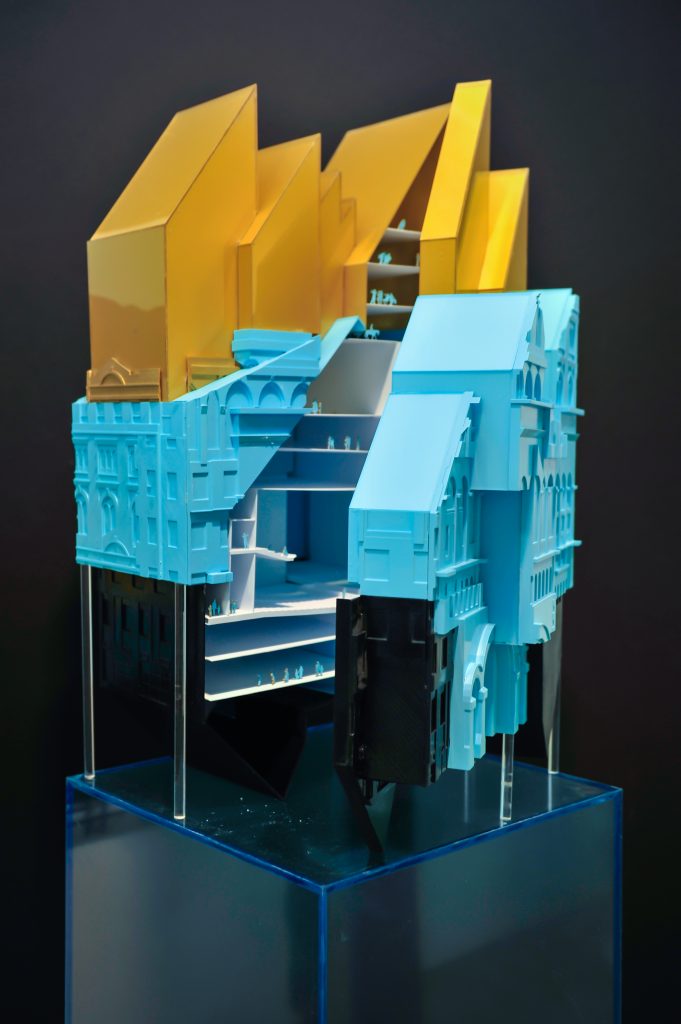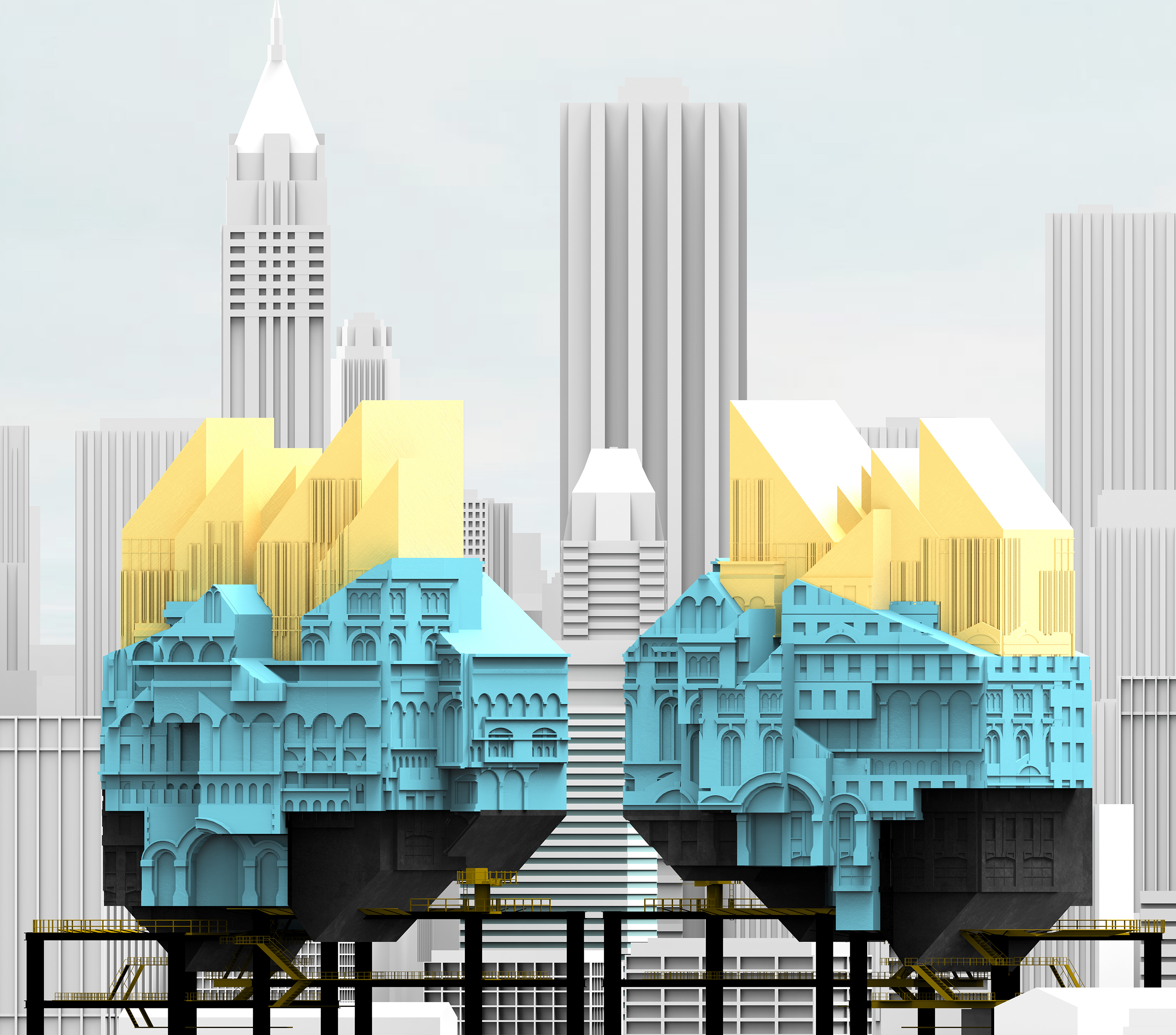IN-Accessible by Ke Li

Ke Li
SCI-Arc (Southern California Institute of Architecture)
Advisor: Elena Manferdini
Even though buildings do not literally speak, they are not necessarily silent. They communicate through signs and representations. People are told by buildings where the entrance is. It is odd then that the need to communicate accessibility seems to outweigh other voices. Perhaps they “talk too much” in this respect. Decorated entrances and, countless windows, clutter facades and drown out other messages in their incessant chatter. When we listen to the building, what else might we hear?
Taking up the role of opening dialogue, the exterior communicates with the interior through signs (entrances, windows…), which are important devices that serve as a transparent representation of the building. This thesis seeks to find how architecture would operate if it did not respond to the fear of needing to situate ourselves within it, of being ‘mute’. Through IN-Accessible, architecture can find a subverted way to communicate.
In-Accessible By Ke Li Modelo »
This is a concert hall on East River in New York. A wired-shape and bright-color building floating above the river. Being a container of art and being an artwork of itself.
Even though buildings do not literally speak, they are not necessarily silent. They communicate to the public in other ways. There is a long discourse on communication in architecture, the classical orders communicated information about the significance or programmatic function of a building. They made the sounds through the signs and representations. We can understand the exterior as the opening dialogue, since it is most often the first encounter with the building. The exterior sometimes communicates with the interior though signs, such as the entrance, the windows show where habitable space and circulation. These signs are an important device that serve as a transparent representation of the building and how it relates to the human scale. And they sure complete a beautiful appearance to the public. It is odd then that the need to communicate accessibility seems to dominate most communications when it comes to buildings. People are told by buildings where the entrance is, for example. Through things like orientation, decor, scale, buildings can communicate many things.
IN-Accessible By Ke Li Modelo »
However, following the codes, where to open the window, where to set the doors makes the building elevation become a cliche. In kids’ drawings, a square plus the triangle rooftop, adding the rectangular door in the middle, window on the side, It is a house. I can see the development of curtain wall would be a solution to avoid the cliche, it delete the cliche, builds the shining finish. But it also delete the beauty that created by the signs.

I do have the faith in the beautiful signs that exist on the buildings. Instead of deleting the cliche talking, I experiment the way making them talking gibberish. By deforming the traditional facades, and reforming them in to the new facade. And eliminate the function, using the single color to mute them.

The golden roof pointed up while the industrial bottom point down, they were separated until the modernist arches glued them together. The golden roof is the part become the public space, the black bottom is the entrance and storage space, and the blue is the concert hall.
People can see the big entrance from distance, but they can never enter through there. People can read the windows the decorations, but they can never tell the story inside.

